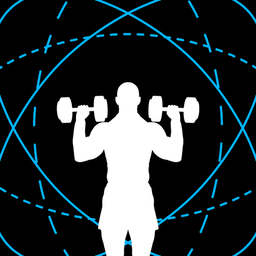How Many Fruits and Vegetables a Day (Surprise: It’s Not as Much as You Think!)
"Eat your fruits and vegetables!" Yeah, OK but how many fruits and vegetables a day, exactly? And how does it help our health? Find answers here.

Like most people, you probably have a hazy memory of your parents strapping you into your highchair and then cheating/coddling you into eating your fruits and vegetables. You know, banana pancakes. Zucchini bites.
And broccoli porridge (so your smart-ass can’t pick out the green bits). But now that you’re an adult, you’re free to make your own decisions. Like:
2. Not getting enough fruits and vegetables because … well, who knows how many fruits and vegetables a day qualifies as “enough,” anyway? ¯\_(ツ)_/¯
Sounds familiar? No, don’t high-five us!
Not eating or not eating enough fruits and vegetables is a Very Bad Thing for your health.
We’ll explain why, then share exactly how many fruits and vegetables you need a day. We’ll also throw in a few tips on increasing your fruit + veggie intake (don’t worry, none involve getting your partner to “sneak” spinach into your omelet!)
Not eating enough fruits and vegetables is Bad
Fruits and vegetables provide you with 3 healthful things:
Or, in other words, micronutrients essential for normal bodily functions, such as helping fight infection, promoting wound healing, and regulating hormones.
E.g., dark green leafy vegetables are rich in folate (vitamin B9), which helps your body produce oxygen-carrying red blood cells.
There are two types of fiber: insoluble fiber and soluble fiber.
Insoluble fiber adds bulk to your stools, which makes for an easier time in the bathroom (more regularity, less grimacing) 🚽.
Insoluble fiber does even more for you. It slows gastric emptying (i.e., the rate at which food empties from your stomach), leading to a gentler rise in blood glucose levels and an increased sense of satiety.
It may also nourish your “good” gut bacteria, promoting a healthy gut microbiome.
Learn why you should care about your gut health here:

These are plant-based bioactive compounds produced by plants.
Now, there are too many phytochemicals to cover (there are countless categories + individual phytochemicals within those categories), so we’ll just briefly touch on 2:
- Lutein (under carotenoids): Improves immunity, good for eye health. Found in asparagus, spinach, kale, green beans, etc.
- Flavanones (under polyphenols): Protective effects against cardiovascular diseases, prevention of inflammation and allergies. Found in the pulp of citrus fruits, such as grapefruit, pomelo, and lemon.
Here’s the thing. When you don’t eat enough fruits and vegetables, you’re not just missing out on allll that ✨ good stuff ✨ above.
You’re also leaving more stomach space for significantly more processed and less healthy foods.
Namely, ultra-processed foods that are calorie-dense, nutrient-poor, and absolutely heaving with added sugar, sodium, and saturated fat. As we said, Bad.
In more definite terms, eating enough fruits and veggies could:
Lower your risk for many chronic health conditions, including:
- Cardiovascular diseases
- High blood pressure
- Hypercholesterolemia
- Osteoporosis
- Many cancers
- Chronic obstructive pulmonary diseases
- Mental disorders
OK, say less — how many fruits and vegetables a day?
Great that you’re now convinced. Let’s get that high-five now ✋ Alright, so how many fruits and vegetables a day?
The World Health Organization recommends 5 servings daily. Um, wait, how much is a serving of fruit and vegetables?
Answer: 80 grams.
If you don’t count your calories, that probably still doesn’t mean anything to you, so here are some examples of what 80 grams is for various common fruits and veggies.
Fruits
- Apple, pear, orange, peach, or nectarine: 1 medium
- Avocado: Half of a medium
- Banana: 1 small
- Grapefruit: Half of a medium
- Grape: 16
- Kiwifruit: 1 medium
- Mango: Half of a medium
- Melon: Half-inch thick wedge of sliced watermelon, honeydew, cantaloupe
- Pineapple: A quarter of a medium
- Strawberry: 4 large
Vegetables
- Bell pepper: Half of a large
- Broccoli or cauliflower 5 to 8 florets
- Carrot: 6 baby carrots
- Corn: 1 small ear
- Leafy vegetable: 1 cup raw or half-cup cooked
- Potato: Half of a medium
- Squash: Half of a small
- Zucchini: Half of a large
But- but that’s still way too much?!
5 servings? 400 grams of fruits and vegetables daily? If your idea of eating fruits and vegetables is happily munching away on the:
- Cute, diced pineapples on your pizza slices
- Plump little raisins in your cinnamon raisin bread
- Dried fruit bits in your store-bought granola
… then, TBVH, striving for 5 servings of fruits and vegetables daily is akin to trying to run a marathon when you can barely complete 5 km without feeling like your heart is about to burst.
Um, and speaking of the 5K, we’re just going to leave this here:

Which is why we think you’d be happy to hear that you don’t have to eat 5 servings of fruits and veggies if you can’t — just 2 would be good enough. We’re not just trying to make you feel good, btw.
It’s what the research says.
More specifically, a 2017 systematic review published in the International Journal of Epidemiology suggests that just 2 servings of fruits or vegetables daily could help you see a:
- 6% reduction in risk of heart disease
- 18% reduction in risk of stroke
- 13% reduction in risk of cardiovascular disease
Of course, eating 5 servings would provide maximum health benefits and heart protection, but if that’s not possible, at least you know 2 servings are good for you, too.
Ways to eat more fruits and veggies 🍓🥬
Here are a few exciting (well, as exciting as it can be) ways to eat more fruits and vegetables:
- Combine protein powder and fresh/frozen fruit, then blend for a protein smoothie
- Opt for salads more often
- Make vegetable soups or stews
- Load your sandwiches up with veggies
- Dip cut fruit into peanut butter or yogurt dip for an afternoon snack
And if you want to track your fruit and veggie intake, check out GymStreak. Log your meals and get a real-time update of how you’re doing on that front, plus your:
- Calorie intake and
- Macronutrient split
Bonus: it’s also a workout planner + tracker.
Check it out here:
Workout Programming + Nutrition Tracking, Off Your Hands
*sigh of relief* We'll guide you through it all — step-by-step. Just download the app, and you'll be making progress toward your dream body like never before.
References
Aune, Dagfinn, et al. “Fruit and Vegetable Intake and the Risk of Cardiovascular Disease, Total Cancer and All-Cause Mortality—a Systematic Review and Dose-Response Meta-Analysis of Prospective Studies.” International Journal of Epidemiology, vol. 46, no. 3, June 2017, pp. 1029–56. Silverchair, https://doi.org/10.1093/ije/dyw319.
“Fruits and Vegetables Serving Sizes Infographic.” Www.Heart.Org, https://www.heart.org/en/healthy-living/healthy-eating/add-color/fruits-and-vegetables-serving-sizes. Accessed 15 Mar. 2024.
Healthy Diet. https://www.who.int/news-room/fact-sheets/detail/healthy-diet. Accessed 15 Mar. 2024.
Kumar, Ashwani, et al. “Major Phytochemicals: Recent Advances in Health Benefits and Extraction Method.” Molecules, vol. 28, no. 2, Jan. 2023, p. 887. PubMed Central, https://doi.org/10.3390/molecules28020887.
Merrell, Brigham J., and John P. McMurry. “Folic Acid.” StatPearls, StatPearls Publishing, 2024. PubMed, http://www.ncbi.nlm.nih.gov/books/NBK554487/.
O’Connor, Elizabeth A., et al. “Introduction.” Vitamin, Mineral, and Multivitamin Supplementation for the Primary Prevention of Cardiovascular Disease and Cancer: A Systematic Evidence Review for the U.S. Preventive Services Task Force [Internet], Agency for Healthcare Research and Quality (US), 2021. www.ncbi.nlm.nih.gov, https://www.ncbi.nlm.nih.gov/books/NBK581645/.
PEM, Dhandevi, and Rajesh JEEWON. “Fruit and Vegetable Intake: Benefits and Progress of Nutrition Education Interventions- Narrative Review Article.” Iranian Journal of Public Health, vol. 44, no. 10, Oct. 2015, pp. 1309–21.
Slavin, Joanne L., and Beate Lloyd. “Health Benefits of Fruits and Vegetables1.” Advances in Nutrition, vol. 3, no. 4, July 2012, pp. 506–16. PubMed Central, https://doi.org/10.3945/an.112.002154.


